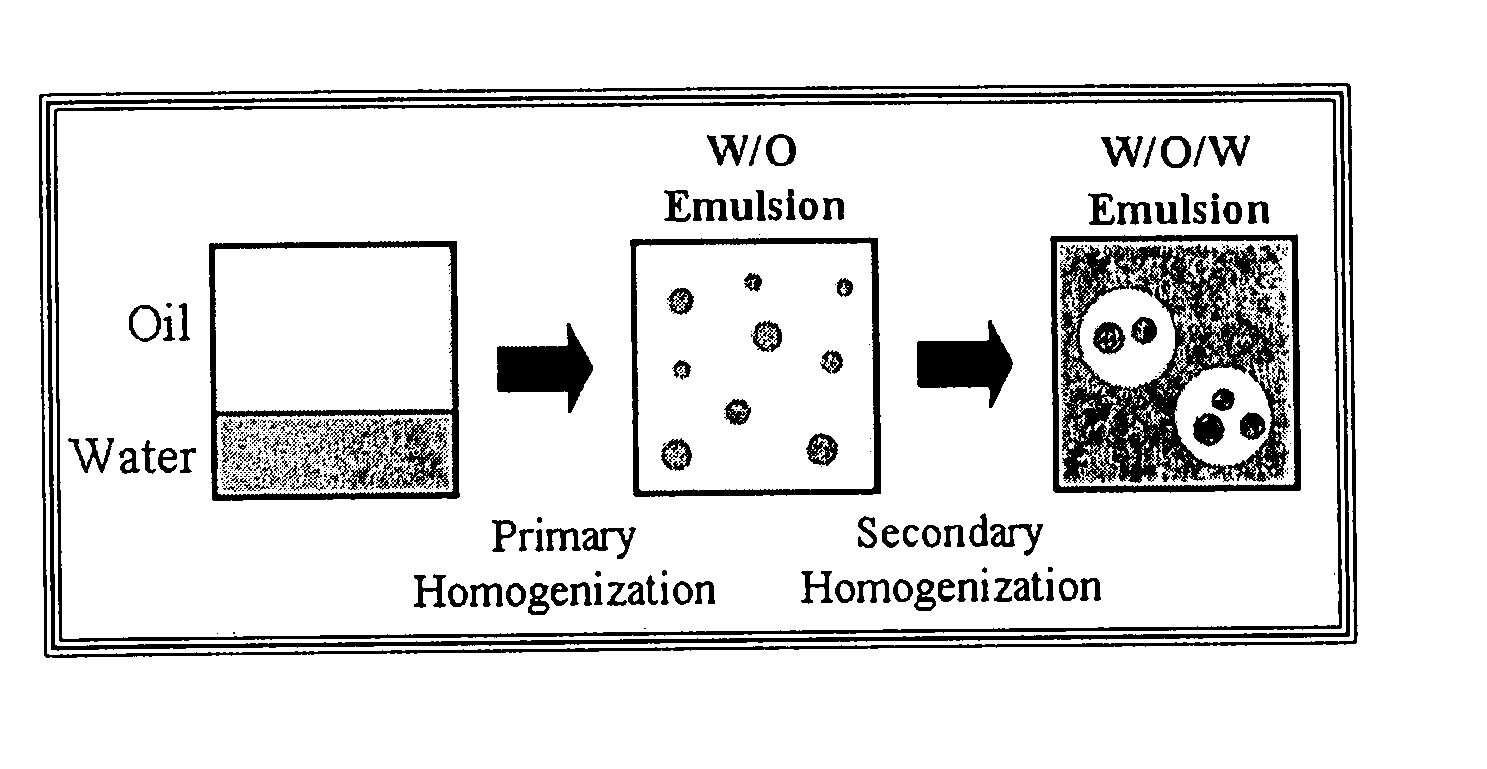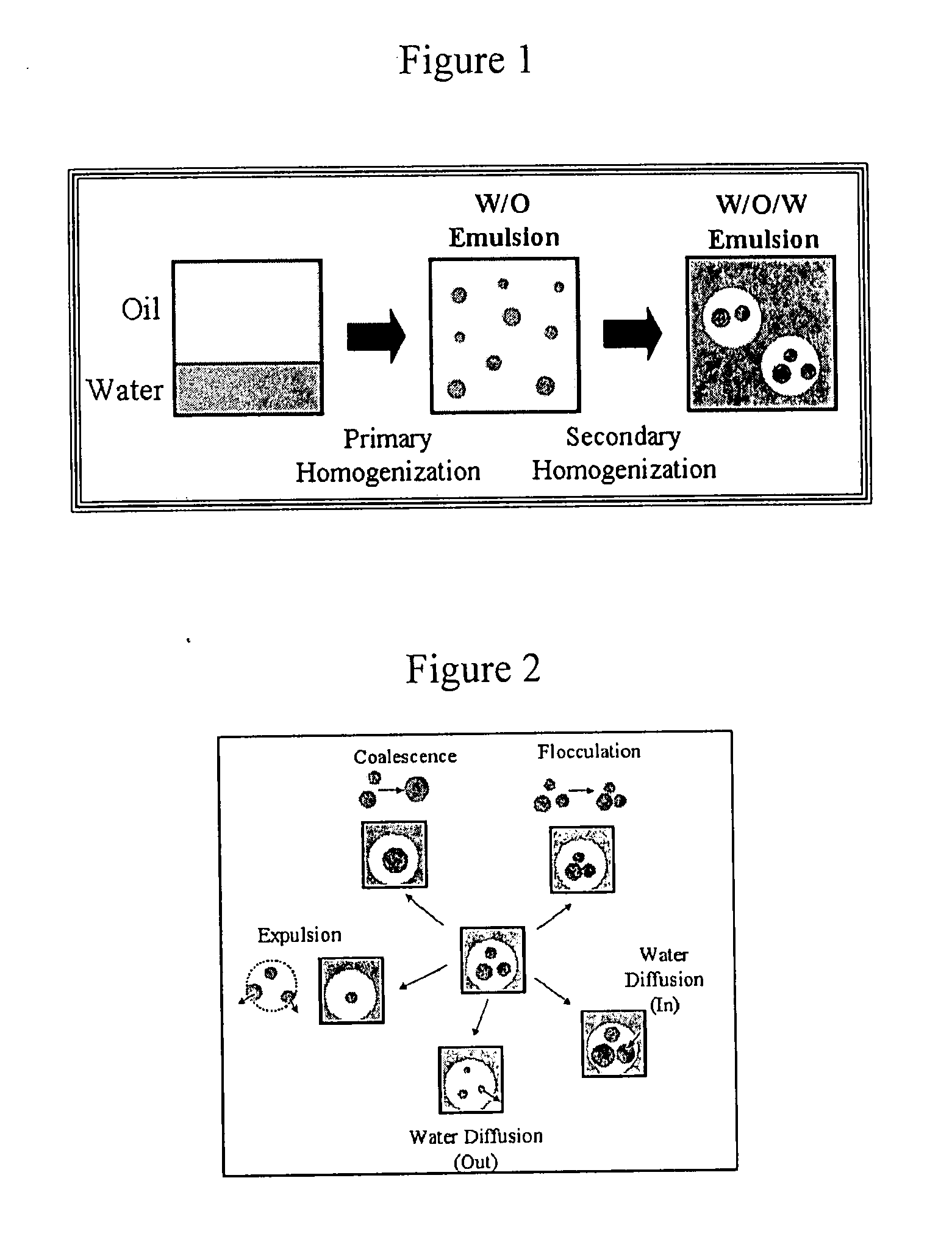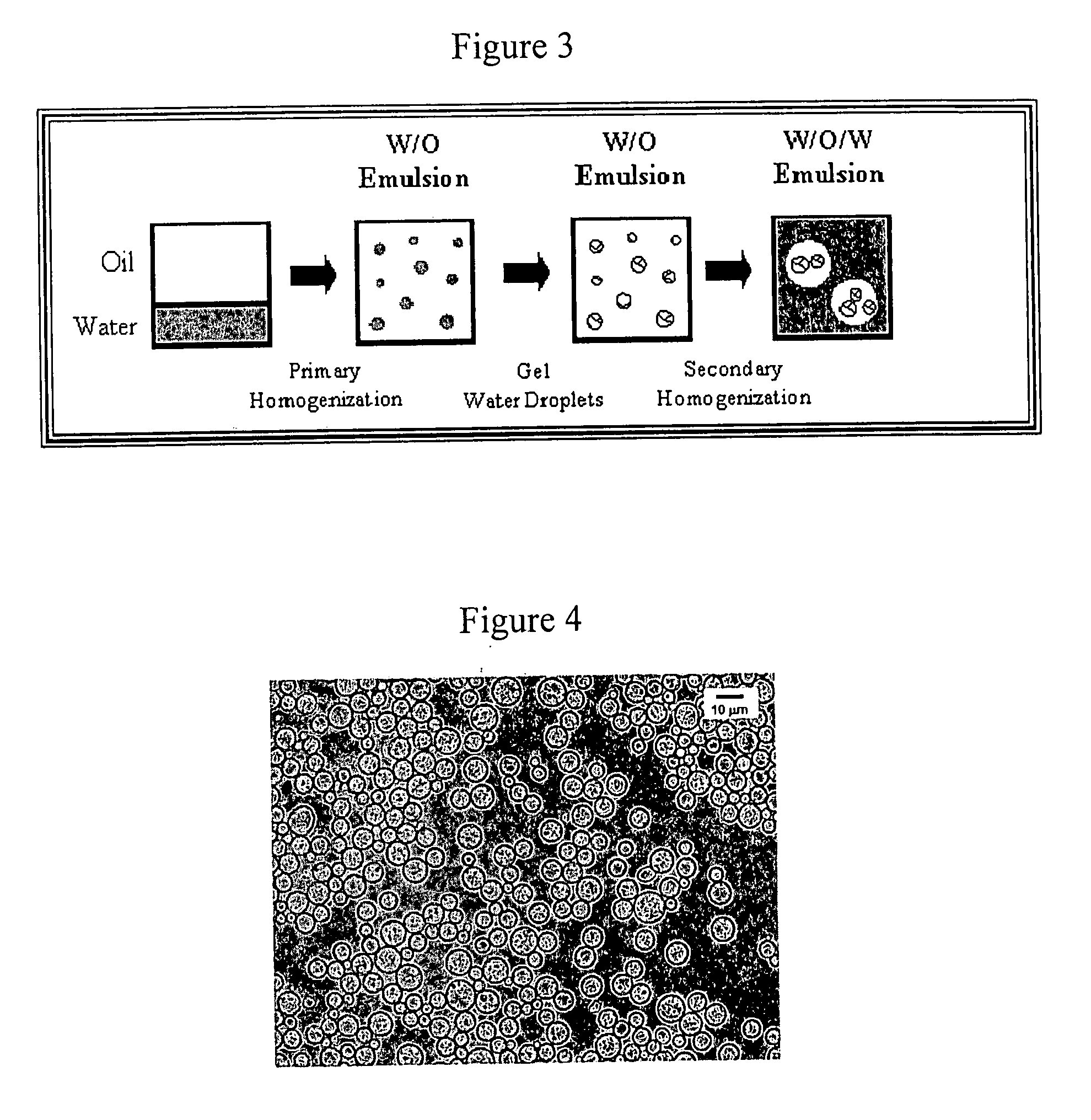Stabilized emulsions, methods of preparation, and related reduced fat foods
a technology of stabilized emulsions and emulsifiers, applied in the direction of food ingredients as emulsifiers, applications, other chemical processes, etc., can solve the problems of large economic burden on society as a whole, deterioration of the quality of life of individuals involved, and variety of human health problems
- Summary
- Abstract
- Description
- Claims
- Application Information
AI Technical Summary
Benefits of technology
Problems solved by technology
Method used
Image
Examples
example 1
[0049] Solution Preparation. Emulsifier solution was prepared by dispersing 8 wt % PGPR into corn oil and heating to 50° C. This PGPR concentration was selected because previous studies have shown that it is capable of forming W / O emulsions containing small water droplets with a narrow size distribution (7, 14). Protein solution was prepared by dispersing the desired amount (15 wt %) of WPI powder into 5 mM phosphate buffer solution at pH 7 containing 0.02 wt % sodium azide (as an antimicrobial agent) and 100 mM NaCl (to facilitate gelation) and stirring for at least 2 h at room temperature to ensure complete dissolution. The pH of the WPI solution was adjusted back to pH 7.0 using 1 M HCl if required, and then the solution was heated to 50° C. before emulsification.
example 2
[0050] Preparation of W / O Emulsions. Water-in-oil emulsions were prepared by homogenizing 20 wt % aqueous phase with 80 wt % oil phase. The emulsions were prepared at 40-50° C. (rather than at room temperature) because the oil phase was less viscous, and the emulsions produced by homogenization had smaller droplet sizes. The aqueous phase with or without 15 wt % WPI was dispersed gradually into the oil phase under agitation with a magnetic stirrer and then blended together using a high-speed blender (M133 / 1281-0, Biospec Products, Inc., ESGC, Switzerland) at 50° C. for 2 min. The coarse emulsions were then passed through a two-stage high-pressure valve homogenizer (LAB 1000, APV-Gaulin, Wilmington, Mass.) three times: 19 MPa (2700 psi) for the first stage and 2.1 MPa (300 psi) for the second stage. Temperatures of the emulsions were 45 (±1 and 44 (±1° C. when they were fed into and came out of the homogenizer, respectively. After homogenization, the emulsions were cooled to room tem...
example 2a
[0052] Emulsion 1 (No-WPI) was prepared by homogenizing 20 wt % aqueous phase (5 mM phosphate buffer, 100 mM NaCl, pH 7) with 80 wt % oil phase (8 wt % PGPR in corn oil).
PUM
 Login to View More
Login to View More Abstract
Description
Claims
Application Information
 Login to View More
Login to View More - R&D
- Intellectual Property
- Life Sciences
- Materials
- Tech Scout
- Unparalleled Data Quality
- Higher Quality Content
- 60% Fewer Hallucinations
Browse by: Latest US Patents, China's latest patents, Technical Efficacy Thesaurus, Application Domain, Technology Topic, Popular Technical Reports.
© 2025 PatSnap. All rights reserved.Legal|Privacy policy|Modern Slavery Act Transparency Statement|Sitemap|About US| Contact US: help@patsnap.com



